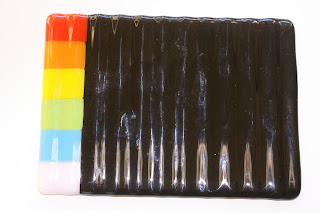One of the best, and most believable, glass myths is that because it is a supercooled liquid, with some solid and some liquid properties, that is why Medieval cathedral windows are thicker at the bottom than at the top. The 'logical' assumption is that the glass was once uniform in thickness, but has flowed to its new shape over the centuries.
However, this assumption is incorrect; once solidified, glass does not flow anymore. The reason for the observation is that in the past, when panes of glass were commonly made the technique used was to spin molten glass so as to create a round, mostly flat and even plate. This plate was then cut to fit a window. The pieces were not, however, absolutely flat; the edges of the disk became a different thickness as the glass spun. When installed in a window frame, the glass would be placed with the thicker side down both for the sake of stability and to prevent water accumulating in the lead cames at the bottom of the window.
Mass production of glass window panes in the early twentieth century caused a similar effect. In glass factories, molten glass was poured onto a large cooling table and allowed to spread. The resulting glass is thicker at the location of the pour, located at the center of the large sheet. These sheets were cut into smaller window panes with nonuniform thickness, typically with the location of the pour centred in one of the panes (known as "bull's-eyes") for decorative effect. So now you also know how Bullseye Glass Company got its name.



















